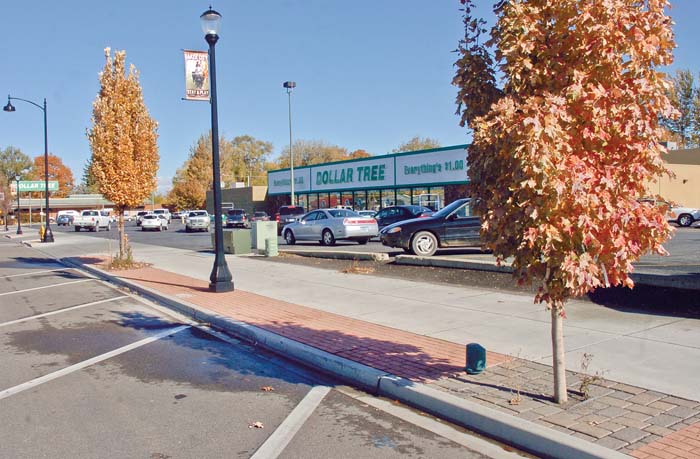OTEC gets green light to install charging station
Published 10:20 am Wednesday, October 23, 2019

- Oregon Trail Electric Cooperative plans to install a charging station for electric vehicles on the east side of Resort Street in downtown Baker City. The nearest parking space will be set aside for the electric vehicle using the charger, which will accommodate one car at a time.
BAKER CITY — Oregon Trail Electric Cooperative hopes to have a charging station for electric cars installed by the end of the year on Resort Street.
The Baker City Council on Tuesday approved a resolution designating one diagonal parking space on the east side of Resort Street, near Church Street, for an electric vehicle while it’s using the charging station.
The station could accommodate one vehicle at a time.
The parking space is between Thatcher’s Ace Hardware and the Dollar Tree.
Charlie Tracy, director of engineering for OTEC, said the station will cost about $40,000 to install. Some of the money will come from Oregon’s clean fuels program, he said.
Tracy said OTEC has budgeted to install three charging stations — one in Baker City, one in John Day and one in Burns.
“We think it’s the right thing do for our members,” he said.
The cost of installing the chargers in Baker City, John Day and Burns will have no effect on OTEC’s power rates, Tracy said.
The cooperative, which is based in Baker City and has 23,000 members in Baker, Grant, Harney and Union counties, isn’t planning at this point to install a charging station in La Grande.
The reason, Tracy said, is that an Electrify America charging station, which can accommodate most models of electric vehicles, is in place at the Walmart in Island City.
There’s also an Electrify America station in Huntington, about 50 miles southeast of Baker City.
The situation is different in Baker City.
Although Tesla, probably the best-known maker of electric vehicles, installed one of its Supercharger charging stations in 2015 in the parking lot of the Sunridge Inn in Baker City, those stations can charge Tesla vehicles only.
Other EVs, such as the Chevrolet Bolt and Nissan Leaf, can’t recharge at a Tesla Supercharger station.
Tracy said OTEC has added a Chevrolet Bolt, which has a range of about 240 miles when its batteries are fully charged, to its fleet. He said OTEC employees use the vehicle to travel between the cooperative’s offices.
Tracy said the charger OTEC will install in Baker City can handle all types of EVs, including ones that use the North American charging port design or the Japanese version. The station would also accommodate Teslas, which come with adapters.
Tracy said OTEC officials want to install charging stations in places where drivers who use them can easily access restaurants and shops while their car’s batteries are being replenished.
He said OTEC doesn’t want electric vehicle drivers to bypass Baker City and other communities in the cooperative’s service area due to a lack of charging stations.
Tracy said the OTEC station would be able to give a typical EV up to 250 miles of driving range in one hour.
As for cost, he said OTEC plans to charge a $1 connection fee per vehicle, and then a per-minute fee as electricity is being transferred to the vehicle’s batteries.
Tracy said OTEC hasn’t calculated the kilowatt-hour rate for the electricity dispensed from the charging station. But he said it’s likely that a driver who pulls in with batteries nearly empty, and then uses the charger to fully recharge the vehicle, would pay about $15.
The amount of time needed to recharge a car would be based not only on the charge level of the batteries but also on the age of the vehicle.
Tracy said older EVs, such as the first generation Nissan Leaf, can’t recharge as rapidly as newer vehicles such as the Bolt.
The cooperative’s goal is for the stations to be self-sufficient, bringing in enough revenue to cover their operating and maintenance costs.
A feature on OTEC’s website — otecc.com — allows users to compare the driving range, per dollar spent on fuel, between gasoline and electric vehicles.
According to the calculator, if gasoline costs about $3.05 per gallon, for the cost of one gallon of gas an EV driver could buy enough electricity to give about 110 miles of range — effectively, 110 miles per gallon.





